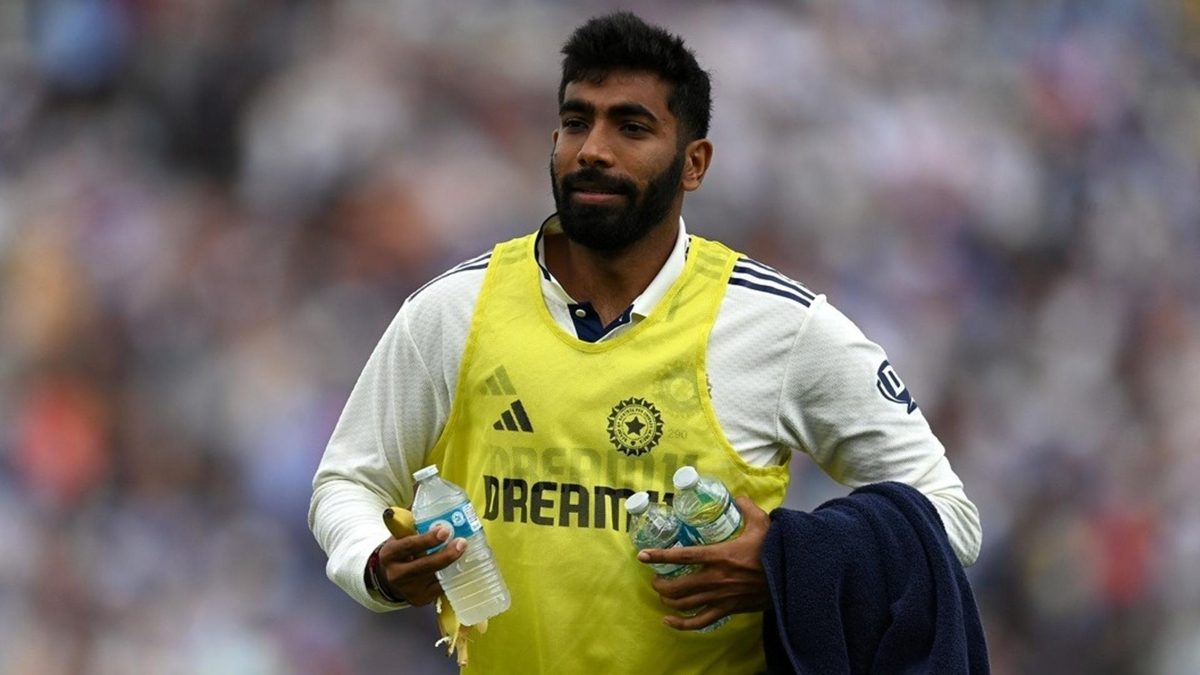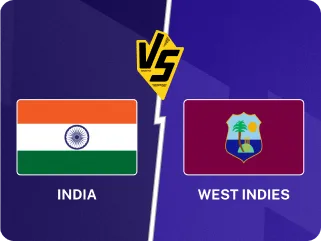
The criticism around the Indian team management handling Jasprit Bumrah’s workload management is both misplaced and uncalled for.
Bumrah is the only bowler with 200 Test wickets at under 20 apiece. This is among all bowlers across time and space, pace or spin (or both), underarm or overarm, left-arm or right-arm or ambidextrous.
His recent form has also been terrific. Despite playing only three Tests on the England tour – including Old Trafford, where he was off-colour – he equalled the Indian record of two five-wicket hauls in a series in England. With 26.00, he was the only Indian to finish with an average below 32.
A few months ago, he had become the first Indian fast bowler to take three five-wicket hauls in a series in Australia. His 32 wickets on that tour were also an Indian record in Australia.
For India, Bumrah has the most wickets in Australia (64 at 17.15) and the joint-most in England (51 at 26.19). On unhelpful Indian wickets, his 47 wickets have come at 17.19 – an average that has eluded even spinners.
He would have been universally hailed a hero. That he is not, of late, is largely due to two reasons.
One, India rested Bumrah but pulled off a stunning win at The Oval. It was their second win in two Tests in Bumrah’s absence – a result that stood in contrast with the two defeats and a draw in three Tests when he played. All that pushed his terrific career temporarily to the background. And two, he played only three Tests in the series – a pre-tour arrangement the team management had agreed to, honoured, and reminded the public of throughout the series.
“Warriors” and workload
The three-Test agreement had been announced by the Indian Test captain Shubman Gill and head coach Gautam Gambhir ahead of the tour. Even after India lost the first Test, Gambhir confirmed that there would be “no compromise on the workload of a player”.
Bumrah took a five-for in each of the first and the third Tests (India lost both), skipping the second (India won this one). After the second Test, Sunil Gavaskar criticised Bumrah, drawing the usual comparisons with Kapil Dev, who had famously never missed a game to an injury in a 131-Test career.
While neither Kapil’s longevity nor fitness is in doubt, what is often not mentioned is that he had to cut down on his pace. On Test debut in 1978/79, Kapil had famously prompted Sadiq Mohammed to ask for a helmet, a novelty back then. As he toiled hard on docile wickets with little support at the other end, Kapil had to cut down on pace.
By the mid-1980s, Kapil was a little over medium pace. While still supremely skilled, he was seldom running through sides. Until the end of 1983, he had 247 wickets in 62 Tests at a wicket every 54 balls. Across the next four years – he led India in the latter half – he had 71 in 29: that strike rate read 82.
Kapil’s batting made up for his fading effectiveness as a strike bowler, as did the lack of an alternative. This was also an era when India seldom won: they triumphed in only 24 of Kapil’s 131 Tests. He did find his mojo in his later days even at reduced pace, but it is unlikely that a contemporary Indian fast bowler would be allowed a four-year gap where they could be significantly below par.
Bumrah is not merely another contemporary Indian fast bowler. He has to bear the burden of bowling in the powerplay and at the death in ODIs and T20Is, especially in both World Cups. Seldom is a fast bowler in the world expected to be world-class every time he takes the field against the best opposition in any of the three formats.
But let us return to India’s England series where, after the third Test, Irfan Pathan criticised Bumrah for not bowling longer spells – and clarified on social media that he had never accused the team.
With the series on the line, India picked Bumrah for the fourth Test. Bowling significantly slower than his usual self, he struggled to reach 140kph and conceded a hundred runs in an innings for the first time in his career. There were still glimpses of brilliance, but it was evident that he was not at his best.
Mohammad Kaif subsequently wondered whether Bumrah would retire from Test cricket. It was not something any other Indian fast bowler – not even Kapil – had to endure after one Test match. Not only is Bumrah expected to play but he is also expected to be at his peak in every outing.
Kaif’s remarks came a few months after the Boxing Day Test, where the microphone had picked up Rohit Sharma asking Bumrah to go for another over. “Nahin lag raha hai zor” (I cannot bowl fast anymore), came the response – in a Test where he had 9-158.
The dreaded injury came at Sydney. By going in with two out-and-out fast bowlers in virtually every Test, India overbowled the greatest fast bowler in their history to an injury in the fifth.
Fast bowlers run in at about 25kph, leap, stop, and hurl an orb in the air while keeping their arm straight. The human body is not designed for this. Indian bodies, even less so, as Zaheer Khan would tell you.
Bowlers of genuine pace are, thus, gold dust in India. Combine that with Bumrah’s skillset, and you get someone worth wrapping in cotton wool. India had failed to do that in Australia. In England, they were more pragmatic: they ensured Bumrah got the rest he needed.
In Bumrah’s absence, Mohammed Siraj’s stupendous bowling and Prasidh Krishna’s timely strikes helped India square the series at The Oval. That Siraj did not miss a single Test in the series and bowled more balls than any Indian fast bowler on a single tour of England since 1959 did not go unnoticed. The knives were out again.
While not naming Bumrah directly, Gavaskar mentioned how Siraj had “debunked forever this business of workload”, a word he insisted was “a mental thing” and wanted to “go out of Indian cricket dictionary”.
But does Bumrah really not bowl as much as anyone else? Despite his workload being managed, despite a one-year injury gap, he has bowled nearly as much as Siraj since the latter’s debut – and more balls per Test.
Major Indian fast bowlers since Siraj’s Test debut
| Player | Since Siraj’s debut (MCG 2020/21) | Since Bumrah’s return (SA tour 2023/24) | ||||
| Tests | Balls | Balls/Test | Tests | Balls | Balls/Test | |
| Mohammed Siraj | 31 | 4,642 | 150 | 20 | 3,144 | 157 |
| Jasprit Bumrah | 24 | 4,147 | 173 | 18 | 3,080 | 171 |
| Mohammed Shami | 10 | 1,714 | 171 | |||
| Akash Deep | 10 | 1,536 | 154 | 10 | 1,536 | 154 |
| Shardul Thakur | 9 | 1,049 | 117 | 3 | 276 | 92 |
| Prasidh Krishna | 6 | 960 | 160 | 6 | 960 | 160 |
| Umesh Yadav | 6 | 894 | 149 | |||
The numbers should not come as a surprise. As the team’s best fast bowler, Bumrah is expected to take more load than others. What is surprising is how that effort went forgotten after he sat out of one Test despite a previous agreement with the team.
Sandeep Patil echoed Gavaskar in a subsequent interview in rubbishing workload management as “nonsense”. He was firm in his stance that “when you are picked for your country, you die for your country”.
Patil obviously exaggerated the “die for” bit, but he spoke the language of numerous fans on social media and former cricketers who see no difference between armed combat in the frontier and a game of professional cricket. Such comparisons are disrespectful to both professions.
We discussed Kapil’s adjustments. Before Kapil, there had been Ramakant Desai, quicker by Indian standards (and for his five-foot-four frame). “Tiny” – the nickname was inevitable – had Rohan Kanhai and Garry Sobers in his four-for on Test debut, in 1958/59. The team asked him to bowl 49 overs in that innings on a flat Delhi pitch – and 33 and 31.4 in his next two. Seventeen games into a 28-Test career, Desai averaged 40 overs a match. Inevitably, he lost his edge and was dropped. There was a brief comeback, but his Test career was over before his 29th birthday.
When he mentioned “dying for”, Patil perhaps spoke about a swift end to Bumrah’s career. Or perhaps he wanted the slow decay of a glorious, unprecedented peak into a long plateau of Old Trafford performances.
And that is specifically what the Indian team is – rightly – trying to avoid.








